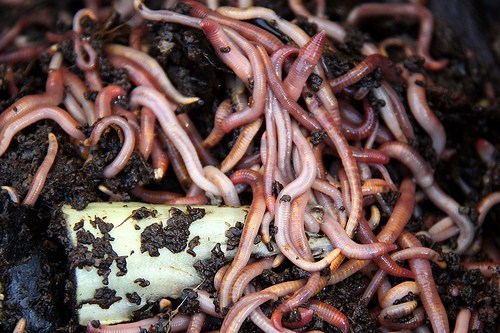Earthworms are something that all of us are familiar with. Most of us, at a young age, were introduced to the “slimy, gooey” things and learned to either love or loathe them. Given various names like “fisherman’s friend,” “gardener’s buddy” and “earth diggers delight,” worms are generally liked by most. Earthworms of various types, from red wigglers to nightcrawlers, have long been associated with healthy, productive soil.
Benefits Of Earthworms In Garden Soil…
Earthworms offer many benefits to the gardener and are commonly seen in healthy, organic soils. Many people believe that worms eat dirt, but in reality, they eat the bacteria and fungi that grow on decomposing matter and give off “worm castings” which are a sort of manure that is filled with nutrients plants love.
There are more than 7,000 species of earthworm divided into 23 families and over 700 genera. All of these worms have one thing in common: they naturally till and aerate soil, they speed the decomposition (composting) process, they help mix soils for more benefit, and they are excellent “canaries” for monitoring a soil’s health.
Red wigglers are commonly associated with compost, as they are the most likely to appear in compost heaps and are the ones used most often for vermicomposting (composting with worms). They are faster than any other organism at the job.
Increasing Earthworms In Garden Soil…
Obviously, you could purchase worms (they are sold by the pound in many garden stores) and just manually add them to the garden. This will work for the short term, but will not be very beneficial since worms are needed all season.
Encouraging worms naturally is the best way. It’s a case of “if you build it, they will come” as in the better your soil for worm habitat, the more worms that will live in it. You don’t need to add worms, just encourage them to be there and they’ll show up on their own.
First, worms love organically-rich soil with a lot of nutrients and a neutral pH level. Start by doing basic tests on your soil (if you can) or just add a lot of organic matter to it. Till it in well and then add more on top, either as growing material (cover crops like clover or buckwheat) or as mulch (clipped grass, leaves, straw, and other quality mulches work best). Occasionally add light water and poke the soil with a compost form (do not turn it).
After a few weeks, perhaps two months, dig a cubic foot of soil and examine how many worms are in it. You should notice a marked increase. By the end of the season, you should not only have a lot of worms per foot, but also have very rich, healthy soil.
Once the soil is healthy, just maintain it and the worms will stay, no matter what you’re growing in it. An added bonus is that the great soil will not only grow huge yields, but by periodically checking the worms in it, you can tell if something might be going wrong when the worms start leaving.
Maintaining A Healthy Environment For Earthworms…
Worms, as said earlier, love nutrient-rich, healthy soil. If you keep adding compost and mulches regularly, you’ll always have great soil. The worms will become part of its ecosystem (via GardeningChannel).
If you like this idea, be sure to share it with your friends and inspire someone you know. Anything becomes possible with just a little inspiration…

